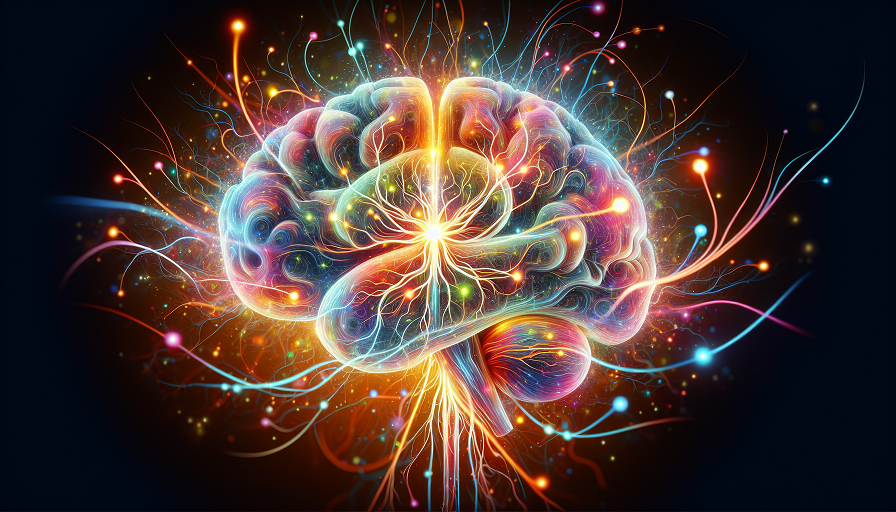
Short answer: Nicotine can produce small, short-lived improvements in attention and working memory by stimulating nicotinic acetylcholine receptors. But the same pharmacology drives tolerance and dependence, even at low exposure. For most people – especially non-smokers – the risk-to-benefit ratio is unfavorable. Safer, better-validated ways to sharpen working memory exist.
Contents
How Nicotine Acts on the Brain
Nicotine binds to nicotinic acetylcholine receptors (nAChRs), particularly the α4β2 subtype densely expressed in prefrontal and striatal circuits that support attention, working memory, and task switching. Brief stimulation increases cortical acetylcholine and modulates dopamine and norepinephrine, often yielding faster reaction time and a sense of mental “snap.” However, nAChRs desensitize quickly; with repeated exposure, receptors upregulate and the baseline state shifts – one reason tolerance, withdrawal, and compulsive use develop.
What the Research Generally Shows
- Acute effects: In laboratory tasks, nicotine can modestly improve sustained attention and short-term memory, especially when people are sleep-deprived or bored. Effects are variable in well-rested non-smokers.
- Withdrawal confound: In habitual smokers, performance on nicotine looks better largely because it relieves withdrawal. That does not translate to a net cognitive advantage over non-use.
- Inverted-U arousal: Too little arousal and you’re drowsy; too much and accuracy drops. Nicotine can push arousal up the curve briefly but can overshoot into jitteriness or anxiety, impairing complex reasoning.
- Rapid tolerance: Receptors adapt within days. The same dose produces less effect, and skipping doses can cause fogginess, irritability, and cravings – classic dependence symptoms.
Forms of Nicotine and Why Delivery Matters
People encounter nicotine via smoke/vape (not recommended – combustion and aerosols add major harms) or via medical nicotine-replacement therapies (gum, lozenges, patches) intended for smoking cessation. Faster delivery (smoke/vape) spikes brain levels quickly and carries higher addiction potential. Slower delivery (patch, gum) blunts peaks but does not remove dependence risk. Using nicotine purely as a cognitive enhancer in non-smokers is off-label and ethically fraught; most clinicians advise against it.
Risks and Side Effects You Should Not Ignore
- Dependence and withdrawal: Even intermittent, low exposures can lead to craving and a performance baseline that feels worse without nicotine.
- Cardiovascular strain: Nicotine increases heart rate and blood pressure; it can provoke palpitations, nausea, and sleep disruption.
- Mood and anxiety effects: Some users experience agitation or increased anxiety – counterproductive for working memory.
- Adolescent brain risk: Nicotine exposure during adolescence alters receptor development; youth and pregnant people should never use nicotine for cognitive purposes.
- Drug interactions and conditions: Caution with arrhythmias, uncontrolled hypertension, GERD, and in those taking bupropion, varenicline, or MAO-inhibiting compounds. Seek medical guidance if you have any medical conditions.
Who, If Anyone, Might Consider It?
There is research interest in nicotinic agents for specific disorders (e.g., attentional deficits, certain neuropsychiatric conditions). Those studies typically involve physician-supervised protocols or investigational compounds targeting nAChR subtypes, not self-experimentation with consumer nicotine. If cognition is a clinical concern, consult a clinician; established treatments (sleep interventions, ADHD therapies, depression/anxiety care) have stronger evidence.
Smarter, Safer Ways to Support Working Memory
- Sleep and circadian timing: 7–9 hours with consistent bed/wake times strengthens prefrontal efficiency and reduces lapses.
- Aerobic exercise: Regular moderate-intensity activity increases BDNF and improves executive function.
- Caffeine + L-theanine: This combination can enhance alertness with fewer jitters than caffeine alone for many adults. Mind evening intake to protect sleep.
- Task design: Use spaced repetition, interleaving, and short, focused intervals (e.g., 25–50 minutes) with movement breaks.
- Bright morning light: Brief outdoor exposure after waking stabilizes circadian rhythms and energy.
- Gum chewing (non-nicotine): A small, short-term alertness nudge without addiction risk; helpful at the start of demanding blocks.
Bottom Line
Nicotine can transiently sharpen attention and working memory, but tolerance, dependence, and cardiovascular side effects make it a poor strategy for most people – especially non-smokers. If you are seeking a cognitive edge, prioritize sleep, exercise, daylight, and well-tested focus routines. Reserve nicotine for its intended medical role in smoking cessation and clinical research, not as an everyday nootropic.

